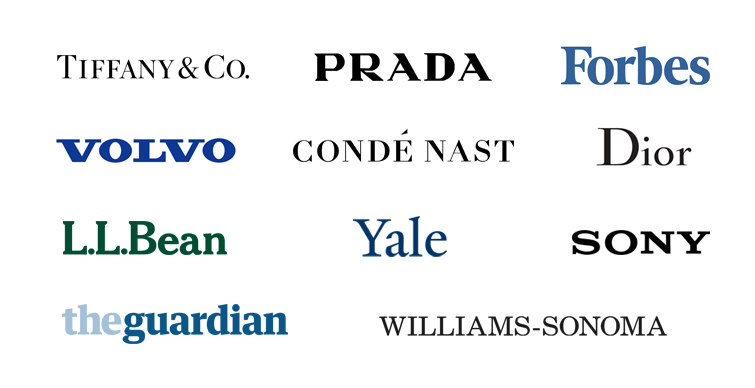


As typography began to evolve and change, logos only seemed to become more important. Text was incorporated as education began to become the standard for all citizens, ushering in new types of logos. Pictorial logos were commonly used to denote buildings and products to people who did not have the ability to read, rather like a functional picture book. Logos have been around for thousands of years, from signs denoting the local blacksmith to government seals, coats of arms and more. These are also an effective form of mass communication, as several logos, such as Apple's apple - probably one of the best examples of a picture-based logo (or a pictorial mark) - are known worldwide at just a glance. They can be as simple as the company name itself, as elaborate as a graphic and everything in between. The purpose of a logo is to help people remember a service or brand offered. Wordmarks are becoming the standard when it comes to designing logos, as it has been observed by some studies that they are more effective than their pictorial counterparts are.Ī logo is a graphic or emblem used by a business, company, organization or even sometimes individuals. When providing a wordmark, such as Google, you provide a name while still providing a recognizable image for the viewer. Trying to keep them straight would become very confusing! We would have hundreds or even thousands of these little pictures to remember. Before you begin, take time to consider what that something is. The Mastercard logo Pentagram dropped the company name from Mastercard's logo in 2016, leaving just two overlapping circles Pentagram rebranded Mastercard in 2016, dropping the wordmark from the logo and causing quite a splash. Like any logo, a wordmark is a symbol of something. Wordmarks are the most widely used of all logos: In fact, many of the largest companies use them. Imagine if all of our favorite brands and companies were only identified by a simple graphic. A logo without symbols or pictures is called a wordmark, and it is easier to make than any other kind. When you provide just a picture, such as Joomla's logo, you have to have faith that a person can learn the association between a picture and a name and service, keeping them separate from other pictorial logos. Why would someone use wordmarks over something like a pictorial graphic? It ties into the fact that they are a more direct type of branding. These are all examples of highly successful and easily recognizable wordmarks that are easily identified with around the world. You can probably think of several examples of wordmarks off the top of your head, but some of the most famous are FedEx, Coca-Cola and even world-famous Google. These types of logos are completely devoid of extra pictures, meaning that logos such as Pepsi and MasterCard are not wordmarks, since these logos contain images as well. How does this work? The number one difference between logos and wordmarks is that wordmarks are text-based logos. We have established that a wordmark is a logo, but not every logo is a wordmark.


 0 kommentar(er)
0 kommentar(er)
